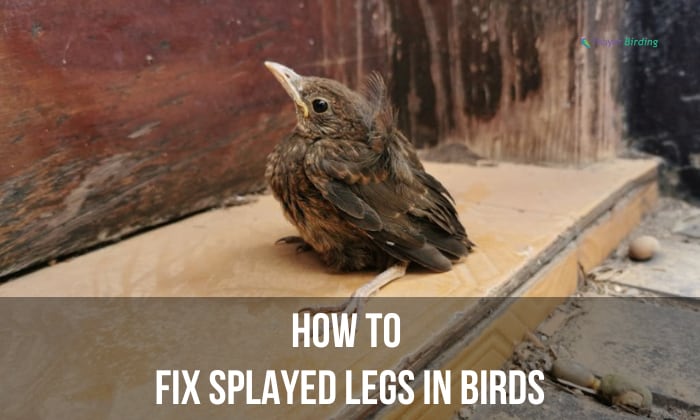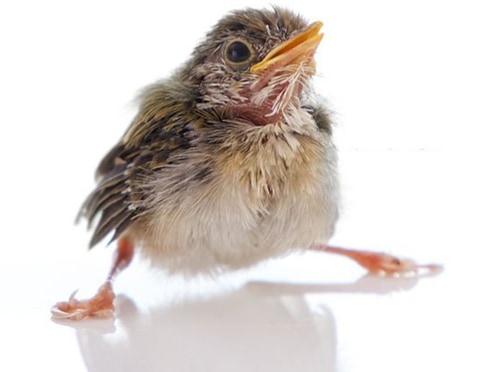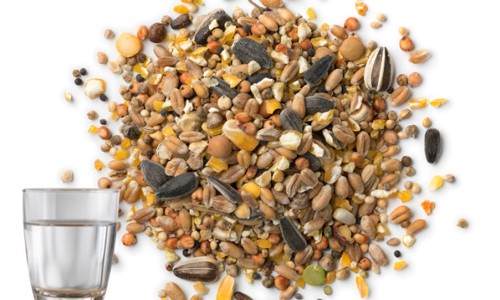A bird with splayed legs often has trouble walking or perching, can’t stand up straight, or move around. It is a pitiful sight, and one might think there is nothing else you can do.
However, learning how to fix splayed legs in birds might help improve the condition of the avians.
What we have here is an effective method to treat spraddle leg that worked for many and might work for you, too!
Table of Contents
Ways to Fix Splayed Legs in Birds
Spraddled or splayed legs in birds happen when the legs are spread out to the sides instead of being held close to the body.
This condition can have different causes, but often, it’s due to poor nutrition, genetics, or improper bedding during early growth.
A bird can’t walk properly when they have splayed legs. This can increase the risk of injury and infection; thus, it’s important to address this condition promptly to prevent further complications.
Splayed Legs Treatment in Baby Bird
Bird leg deformities in young birds are often not a huge problem, since they respond well to treatment (preferably one that’s dictated by a vet, of course). This is because their bones are not yet fully developed.
The treatment method uses some sort of bracelet or shackle to slowly correct the leg. It takes days to perform, as the cuffs are frequently adjusted to reposition the limbs.
Here, we have a detailed guide on how to fix spraddle legs in young birds.
Step 1. Prepare
- Box with towel
- Band-aid
- Scissor
Step 2. Separate the Bird From Other Pets
Isolate the bird with a splayed leg and put it in a warm and insulated box. This will ensure that there’s no disturbance while the bird is undergoing treatment.
Step 3. Place the Makeshift Leg Brace
Cut a regular-sized band-aid in half lengthwise. Gently lift the chick and wrap the band-aid at the knee joint of both legs.
Step 4. Provide Food and Water
With its current condition, it is challenging for the bird to feed. Provide them with accessible food and water sources until they can walk easily.
Step 5. Monitor the Brace
Keep the brace on for one or two days. Regularly check for any chaffing or soiling.
Step 6. Consult With an Avian Vet
When the legs are healed, the band-aid will come off on its own as the bird moves around. Otherwise, visit the vet and discuss other possible treatments.
Extra tips:
- Instead of tape or band-aids, you can bend pipe cleaners around the bird legs.
- Alternatively, find a foam pad and cut two holes in it. The holes should be at a desirable angle and distance from each other so that you can fit the bird legs through them.
Splayed Legs Treatment in Adult Birds
Some birds with foot problems can still stand on one leg and move with ease. In this case, they’ll only need special perches and extra care like regular nail clippings and special cages.
The treatment bracelet of splayed legs is often advertised for newborn birds or younglings. Older birds with fully developed bones require different treatments such as surgery to cut and reshape the leg. It is essential to talk with an avian vet to discuss the best method.
When is it too late for a budgie treatment for splayed legs? After 4 weeks of having this condition, the bird may have to live with it permanently. The bones will harden and cannot be moved as the bird ages, and this is generally true for all species.
The outcome will also depend on the severity and age of the bird. Home treatments might not work. Instead, leave the case to the professionals and hope for the best.
Conclusion
Knowing how to fix splayed legs in birds is an essential piece of information. Whether you need it now or in the near future, you will likely encounter a situation where you can use this knowledge of fixing spraddle leg in birds.
Have you tried treating splayed legs before? How did you do it? Share your experience with us and your fellow readers!

George and I became friends after a birdwatching trip with our new group. And we have been enjoying every adventure together. When he told me the idea of establishing a site that shares our experiences and fun, I immediately agreed. After trials and errors, here we have Thayerbirding.






















